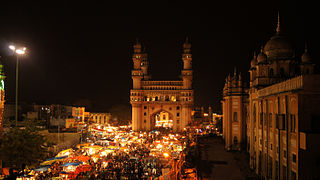
The Charminar is a monument located in Hyderabad, Telangana, India. Constructed in 1591, the landmark is a symbol of Hyderabad and officially incorporated in the emblem of Telangana. The Charminar's long history includes the existence of a mosque on its top floor for more than 425 years. While both historically and religiously significant, it is also known for its popular and busy local markets surrounding the structure, and has become one of the most frequented tourist attractions in Hyderabad. Charminar is also a site of numerous festival celebrations, such as Eid-ul-adha and Eid al-Fitr, as it is adjacent to the city's main mosque, the Makkah Masjid.

Sultan Muhammad Qutb Shah was the sixth ruler of the kingdom of Golconda in southern India under the Qutb Shahi dynasty.

Asaf Jah VI, also known as Sir Mir Mahboob Ali Khan Siddiqi, was the sixth Nizam of Hyderabad. He ruled Hyderabad State, one of the princely states of India, between 1869 and 1911.
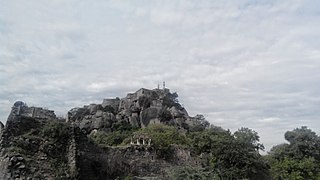
Elgandal Fort is situated amidst palm groves on the banks of the Manair River, approximately 10 kilometres (6.2 mi) from Karimnagar on the Sircilla Road in the Indian state of Telangana. It was once under the control of the Qutub Shahi dynasty, the Mughal Empire, and the Nizams of Hyderabad. During the Nizam era it was the headquarters of Karimnagar. It is believed that a secret tunnel connects Elgandal Fort and Manakondur some 9 kilometres (5.6 mi) from Karimnagar on the Karimnagar-Vemulawada highway.
The Aga Khan Trust for Culture (AKTC) is an agency of the Aga Khan Development Network (AKDN), a family of institutions created by Aga Khan IV with distinct but complementary mandates to improve the welfare and prospects of people in the developing world, particularly in Asia and Africa. It focuses on the revitalization of communities in the Muslim world—physical, social, cultural, and economic. The AKTC was founded in 1988 and is registered in Geneva, Switzerland, as a private non-denominational philanthropic foundation.

The Tank Bund Road is a road in Secunderabad, Hyderabad, India. The Tank Bund dams Hussain Sagar lake on the eastern side and connects the twin cities of Hyderabad and Secunderabad. It has become an attraction with 33 statues of famous people from the region.
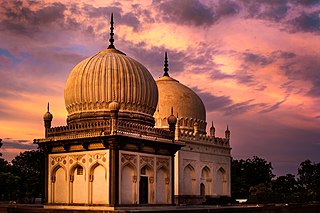
The Qutub Shahi Tombs are located in the Ibrahim Bagh, close to the famous Golconda Fort in Hyderabad, India. They contain the tombs and mosques built by the various kings of the Qutub Shahi dynasty. The galleries of the smaller tombs are of a single storey while the larger ones are two-storied. In the centre of each tomb is a sarcophagus which overlies the actual burial vault in a crypt below. The domes were originally overlaid with blue and green tiles, of which only a few pieces now remain.

Paigah Tombs or Maqhbara Shams al-Umara, are the tombs belonging to the nobility of Paigah family, who were fierce loyalists of the Nizams, served as statespeople, philanthropists and generals under and alongside them. The Paigah tombs are among the major wonders of Hyderabad State which are known for their architectural excellence as shown in their laid mosaic tiles and craftsmanship work. Since it was Amir-e-Kabir H.E. Nawab Sir Khursheed Jah Bahadur who built the Paigah Tombs, he gave special preference in terms of construction to his immediate family. Of all the arches at Paigah Tombs, it is only the arch of his family's tomb that is bigger when compared with others. the entire necropolis was built earlier then the architecture would have been the same for all the tombs but instead in terms of architectural beauty, the tomb of Nawab Sir Khursheed Jah's family was given special preference. The largest arch and the double maqbara inside known as "Mahajar" cannot be seen inside any other tomb and also to mention the beautifully decorated stucco work in the tomb of Lateefunnisa Begum Saheba is not found in any other tomb. The tombstone of Lateefunnisa Begum Saheba, on which is already mentioned was built by Nawab Sir Khursheed Jah Bahadur. "Lateefunnisa Begum Saheba Jid'de Mohammed Mohiuddin Khan Khursheed Jah Tayyari ye Mohammed Mohiuddin Khan Khursheed Jah Bahadur." The word "Jid'de" over here would mean Grandmother of Sir Khursheed Jah Bahadur and "Tayyari'ye Mohammed Mohiuddin Khan Khursheed Jah Bahadur" would mean "Prepared by Khursheed Jah Bahadur." Inside this tomb are the graves of Nawab Sir Khursheed Jah Bahadur's immediate family members. Shahzadi Hussainunnisa Begum (Wife), Shahzadi Hashmatunnisa Begum (Mother), Amir-e-Kabir Nawab Mohammed Rasheeduddin Khan Bahadur (Father) and Hussaini Begum. The Paigah's necropolis is located in a quiet neighbourhood 4 km southeast of Charminar Hyderabad, at Phisal banda suburb, down a small lane across from Owaisi Hospital near Santosh Nagar. These tombs are made out of lime and mortar with beautiful inlaid marble carvings. These tombs are 200 years old and represent the final resting places of several generations of the Paigah Nobles.
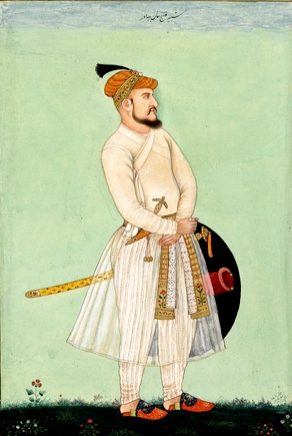
Khawaja Abid Khan Siddiqi, or Nawab Khawaja Abid Siddiqi, better known as Kilich Khan, was a Nawab and military general under Mughal Emperor Aurangzeb. He was a loyal general of the Mughal Empire. He was the father of the Mughal general Ghazi ud-Din Khan Feroze Jung I and the grandfather of Mir Qamar-ud-din Siddiqi, Asaf Jah I. Kilich Khan was a descendant of Abu Bakr, first Rashidun caliph.

Hussain Sagar is a heart-shaped lake in Hyderabad, Telangana, India, built by Ibrahim Quli Qutb Shah in 1563. It is spread across an area of 5.7 square kilometres (2.2 sq mi) and is fed by the River Musi. A large monolithic statue of the Gautama Buddha, erected in 1992, stands on Gibraltar Rock in the middle of the lake. The lake separates the city centre of Hyderabad from the neighbourhood of Secunderabad. The maximum depth of the lake is 32 feet (9.8 m).

The Old City of Hyderabad is a walled city of Hyderabad, Telangana, India, located on the banks of the Musi River built by Qutb Shahi sultan Muhammed Quli Qutb Shah in 1591 AD. There used to be a wall surrounding the Old City, most of which is destroyed. Mubariz Khan, the Mughal governor of Deccan Subah, had fortified the city in 1712 and was completed by Nizam of Hyderabad.

Machiliwale Shah, also known as Syed Kamalullah Shah, was an Indian Muslim Sufi, saint and scholar of the Quadri, Chisti order from India. He was the disciple and the spiritual successor of Syed Sultan Mahmoodullah Shah Hussaini (Shaji). One of his disciples and spiritual successors was Ghousi Shah and Mohammad Hussain, who became the spiritual master of India's noted Sufi saint.

The culture of Hyderabad, also known as Hyderabadi Tehzeeb or Dakhini Tehzeeb, is the traditional cultural lifestyle of the Hyderabadi Muslims, and characterizes distinct linguistic and cultural traditions of North and South India, which meet and mingle in the city and erstwhile kingdom. This blending was the result of the geographic location of the region and the variety of historical dynasties that ruled the city across different periods—its inception by the Qutub Shahi dynasty in 1591 AD, the occupation by the Mughal Empire and its decline, and the patronage under the Asaf Jahi dynasty.
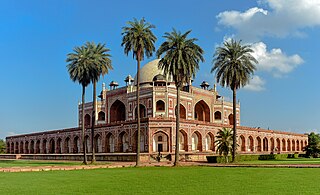
Ratish Nanda is a noted Indian conservation architect, who is the Projects Director of Aga Khan Trust for Culture, India.
The localities and neighborhoods of Hyderabad have unique oral histories, dating to the time of the Qutb Shahi dynasty, over 400 years ago, and are named after various people and things. Some are named after a major building or structure in the locality, others named for individuals. The names are mostly in Telugu and Urdu, the major languages of the city. This is a list of localities, neighborhoods and streets of Hyderabad and their etymology.

Daira Mir Momin,, is a Muslim cemetery located in the Old City of Hyderabad.

A distinct Indo-Islamic architecture style with local contribution is reflected in the historical buildings of Hyderabad, making it the first and "Best Heritage City of India" as of March 2012. The city houses many famous historical sites constructed during Qutb Shahi and Asaf Jahi period, including various mosques and palaces.
Qutb Shahi architecture is the distinct style of Indo-Islamic architecture developed during the reign of the Qutb Shahi dynasty, also known as the Golconda Sultanate.
Hayat Bakshi Begum was the royal consort of Sultan Muhammad Qutb Shah, the sixth ruler of the Qutb Shai Dynasty in south India and daughter of Muhammad Quli Qutb Shah, fifth Sultan of the dynasty. When her son Abdullah Qutb Shah was made sultan at the age of fourteen in 1626, she acted as regent for the first few years of his reign, and continued to wield considerable influence in the state until her death.

















